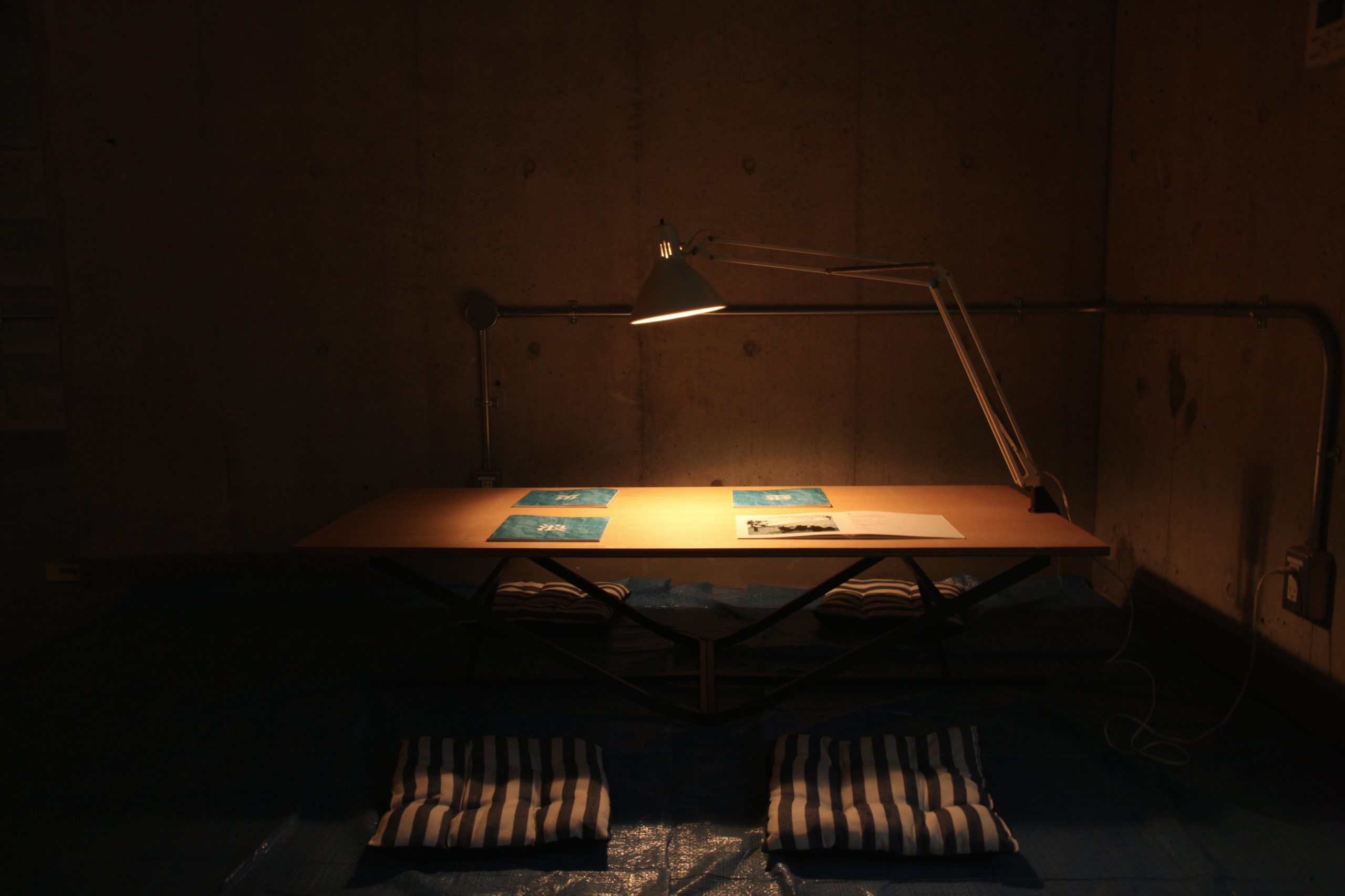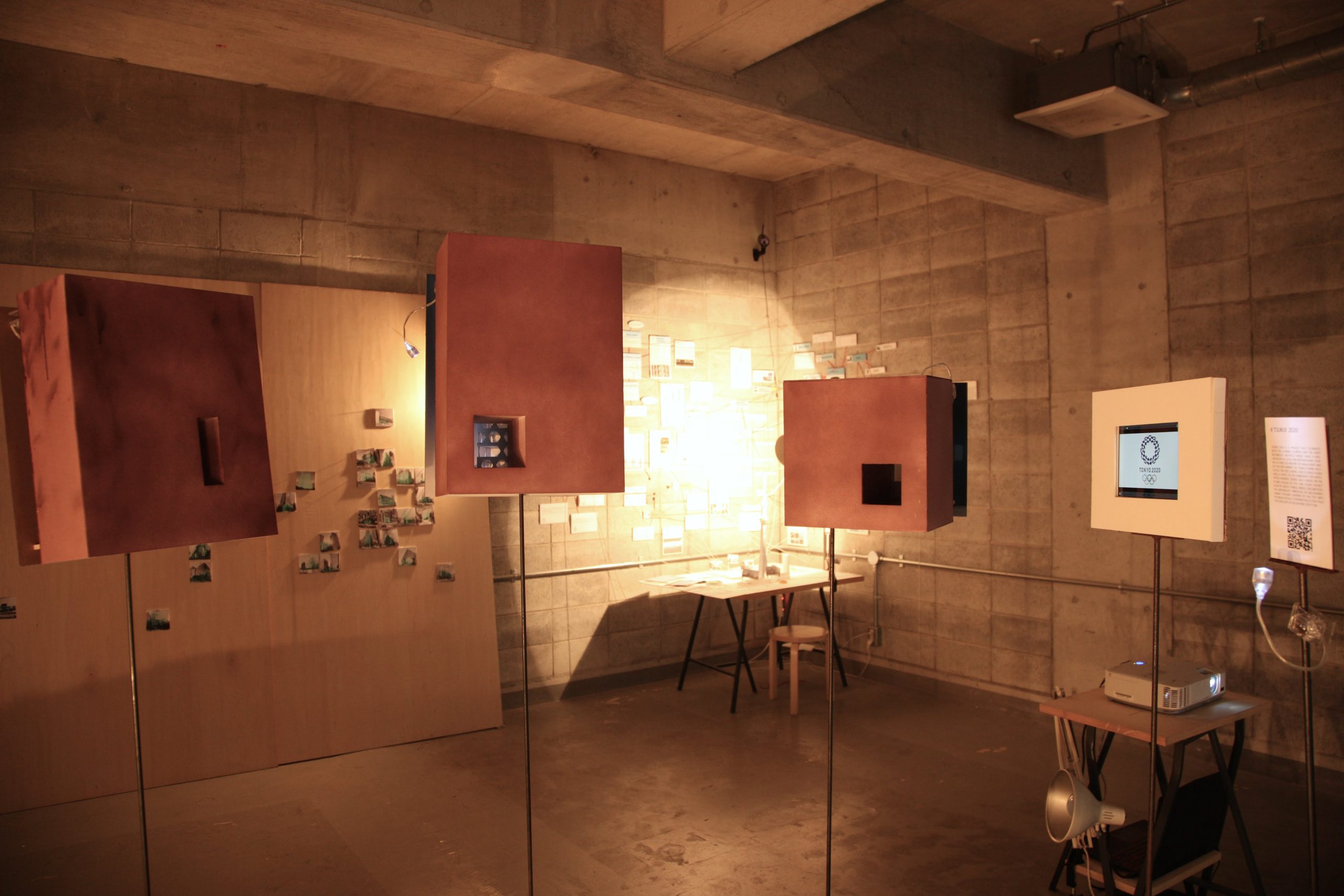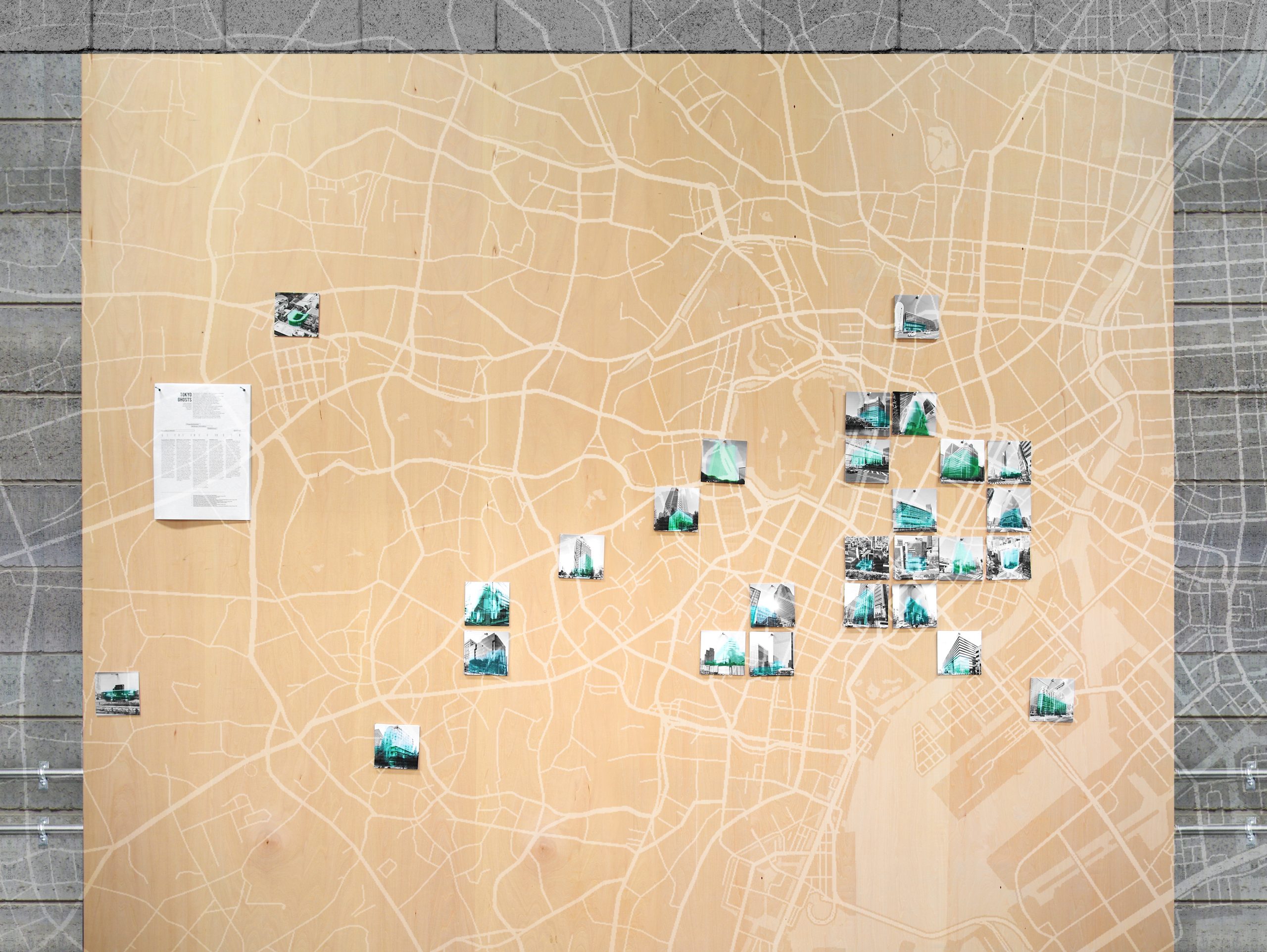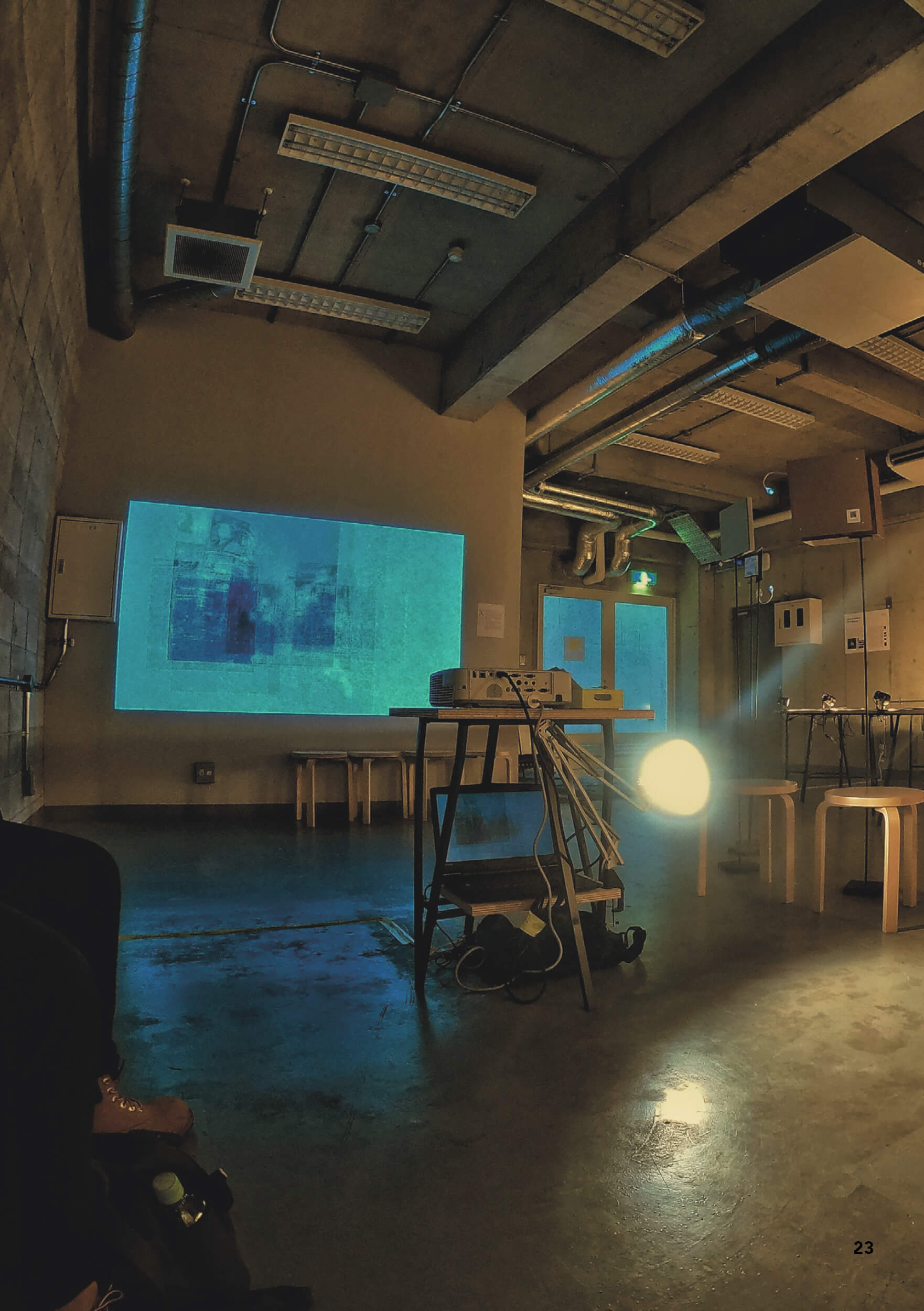Tokyo Blue Tarp departed from a focus on Tokyo’s non-‚instagrammable’: the ubiquitous yet invisible materials that enter the sphere of social media by accident, if at all. Blue Tarp is one of the most prominent materials of this kind: it’s so naturally interwoven with the cityscape its bright blue color seems like some sort of camouflage. Yet this material has a long history and meant a caesura on many levels when it was introduced to Japan in the 1960s. Originally a material to cover trucks in an orange color, it soon evolved and expanded its applications to construction, disaster relief, police work, homeless shelters, and hanami, among others. Its characteristic blue color soon coded it a highly recognizable symbol. The material woven from Polyethylen fibers is valued for its affordability, durability, lightness, flexibility, and foldability. However, all of the functions carried out by the tarp today have previously been performed by other objects or materials, or arose due to increasing standards and altered lifestyles as an aftermath of the developments of the second half of the 20th century. Blue tarp stands for industrialization, mass production and the oil-based economy. The discussions during the exhibition resulted in thoughts how this project could be further developed: actual social media appearance, a further investigation of ‚invisible’ materials and a reading of the city according to a color code were considered.22
Class Category: 2017_Slowgraming Tokyo
PARANOIA
Through the Instagram, people are able to visit the building that they have never been to, and architecture are showing their potential background information hided behind through the internet. But the characteristic of fragmentation owned by the internet make it difficult for people to constitute the whole story of the architecture through the fragmental information. From this point of view, architecture seems to be simplified by the internet. How to restore the complete architectural story, and even show the tight logic of the relationship network behind the architecture, this question became the beginning of our team research.Therefore, as a highly prestige and successful tourist industry in the past few years, the sky tree has become an excellent object of research. In the face of non hierarchical network information of Sky tree, we hope that through researching and organizing the information in two axis of time and information subject, we can restore the whole story of the gradual development, and at the same time explore the relationship between different subjects in the same period. In this way, no logical information are connected with each other through these two clues, and therefore form a whole relationship.Under such research methods, we try to restore the story of the sky tree into three periods, before construction, under construction, and after construction. Before construction, the Sumidaku was facing the problem of aging and low average income. The government wanted to improve the situation and promote regional development through the construction of Sky tree. And during construction, Sumidaku government and the Tobu company invested a lot of money and manpower to promote and propagate the project. On one hand, successfully attracted a large amount of investment, and on the other hand, also reduced the residents’ worry and opposition to the project, so as to let the project go smoothly. And after the complement of Sky tree main and supporting facilities, because of the successful publicity, Sky tree, as the emerging tourism attractions in Tokyo, achieved great success in the tourism industry, brought considerable economic benefits to its builders and owners of the Tobu company, while the whole drive the economic development of tourism and Sumidaku government tax increase. But at the same time, residents have found things not as perfect as it propagated, traffic congestion, noise, local business recession, rising prices and a series of negative effects began to appear. And these new challenge stand in front of residents, government and company, the sky tree story is still to be continued.
TSUKIJI 2020
Based on our discussion with the jury we realized that our project encompassed more than we initially assumed. We began our investigation into the blurry boundary between fact and fiction that we encounter online. Some of the images we created were factual while some were immersed in fiction. The “mockumentary” that we created used the same foundation of fact to imagine a story. Our aim was not to criticize or limit how instagram may be used, or to define a proper way on how a building should be looked at. Instead our aim was simply to create an awareness on how much of our online content is manipulated. While much of this manipulation may be used negatively, it gives us an opportunity to explore content that we care about and enjoy. It also makes it possible to delve deeper into the history and character of spaces and, in a way, “slow-gram” what we know and bring it to a wider audience. The onus is on the viewer to be critical of what they are being shown, but we are finding new methods of inspiration that we should use to their full potential.
CAPSULE_CLUB
Tourists visiting Tokyo may not be architectural fans, however, anyone remains fascinated by this unique piece of architecture – Nakagin Capsule Tower. Together with development of Internet, SNS and later – Instagram, more and more people become aware and begin appreciating its silent appearance. Nevertheless, this silence makes spectators indifferent to the fate of this building and they remain unaware of drama moving around this building for many years. During this exhibition it became possible to show the hidden life inside the building. By conducting interviews with residents different stories were told, what shows diversity of capsule interiors and lifestyles behind similar facades and round windows. Instagram in this case serves as a tool to connect people outside and inside in order to fill a gap between indifference and passion. Visitors of the exhibition may not only view but also touch and feel actual things brought from different residents. Thus, such awareness and publicity that follows development of applications like Instagram may help us preserve buildings longer.
EVERY BUILDING IN THE GOLDEN GAI
The exhibition reminds us of what is missing on Instagram or any social media, like other senses besides visual prompts and stories of real people there. All of this combined allow us to have a wider experience in the Golden Gai district. During the presentation, the explanation about the core of the exhibition could be better expressed from this point. The importance of this research also relies on the fact that it identifies the shift in the main user of this neighborhood as well as its urban shifts along history. The portrait of people – owners or guests of the bar – who tell us their stories are quite significant for the exhibition. In a next step for this work, having this bigger than what was presented in the space would be useful. This work is also valuable in the sense of preservation and documentation of the place and acknowledge Ed Rusha and “Every Building on the sunset strip” as a viable model.
TOKYO_GHOSTS
Tokyo went through a drastic transformation in urban, social, and environmental structures alongside World War II, the bubble economy, pollution, and natural disasters. The Tokyo ghosts project discusses the milestones of the construction, destruction and replacement within Tokyo city. The project helps us to understand more about Tokyo as a city structure. The talk brings about nostalgia, stories, and shared memories from different readers. This paves the way to work more on Tokyo Ghosts from a “collective” point of view. Since we feel the topic is quite big, we’ve therefore decided to call this phase STAGE I. We are looking to the near future to have more participants to take part in this project. In the mean time, we are going to support this research with evidence from history together with architectural events. We are aiming to feed this data over the social medial platforms, mainly Instagram. By doing so, we aim to create a depth to Instagram as a medium which truly has the power to show newfound conceptions of time and space.
X_SHIBUYA
The main element of this piece of work in this exhibition is the video itself projected to the wall and played in loop. The video, approximately 3 minutes in total, is the combination of 2 parts. The First part “collective memory of Shibuya“ is a motion collage configured by pictures from Instagram with #shibuya hashtag, both as a “hacking“ of content, as well as our “Slowgramming“ process to illustrate the big picture of Shibuya based on people‘s collective memory. It was played as an Intermezzo between the repetition of the structural video. The other part is ‚X Shibuya‘ a structuralist video about temporality of things happening around Shibuya crossing in various overlapping time cycles; century, year, day, and hour. Each cycle is represented one single instance during the 90 Seconds video, then overlaid to showcase the different patterns within one video. To display the idea behind this video we provided takeaway postcards, each composed of a front page with a poster like outtake of our video and the timelines of each circle on the backside, providing graphic explanation about the relationship between each cycle and the video‘s length.
2017_Slowgraming Tokyo
Ana MILIJACKI, 2017
text






